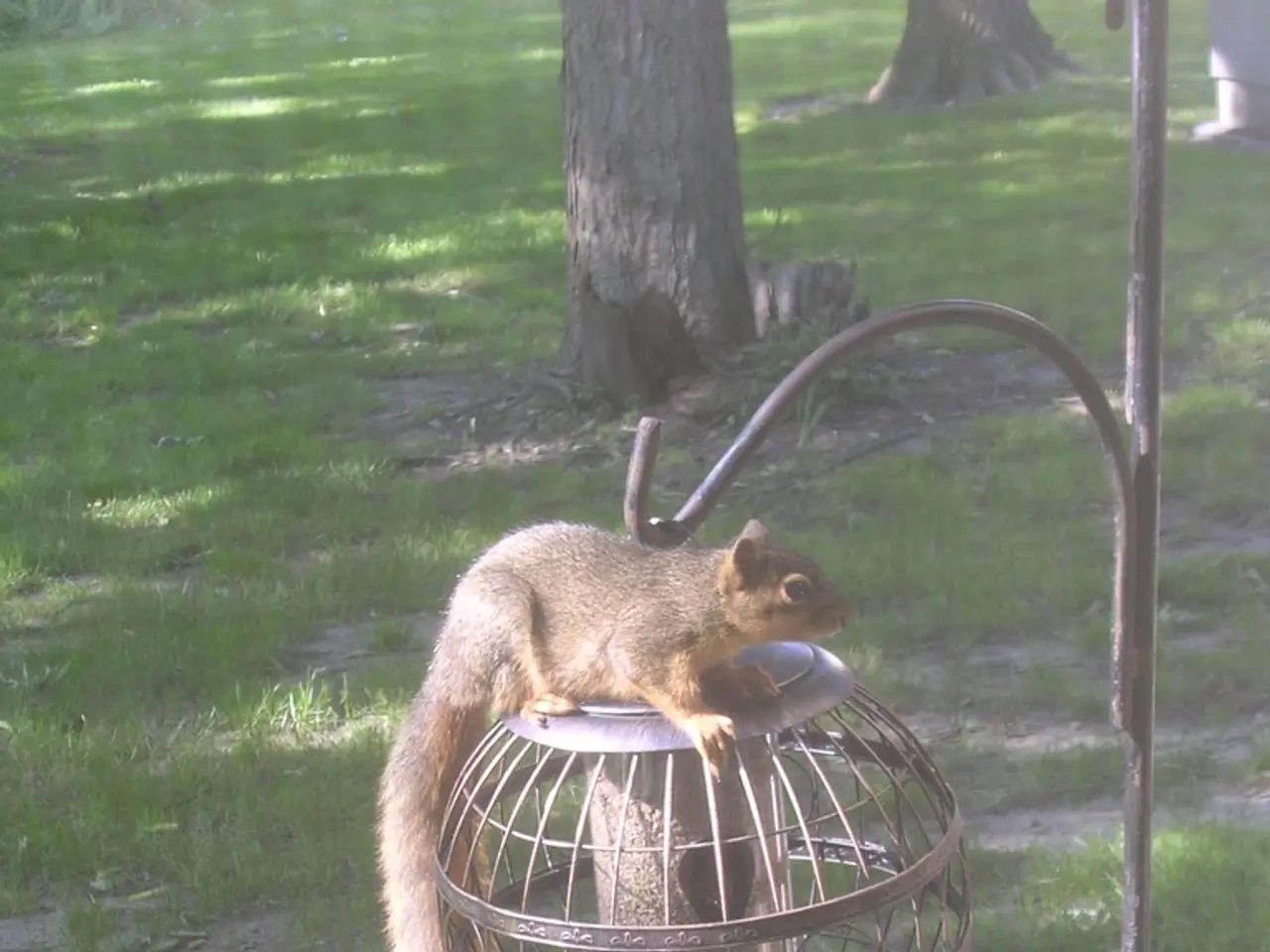Transform Your Garden into a Wildlife-Friendly Sanctuary: Certification Guide
In the heart of urban and suburban landscapes, creating a sanctuary for local wildlife is not only rewarding but essential. The National Wildlife Federation (NWF) offers a unique opportunity to certify your garden as a Certified Wildlife Habitat. To qualify, your garden must provide five essential elements for wildlife to thrive: food, water, cover, places to raise young, and sustainable gardening practices.
Firstly, food is crucial. Native plants that produce nectar, seeds, fruits, and nuts are vital for wildlife. Host plants for caterpillars and leaf litter are invaluable for the continuation of insects in a cohesive ecosystem.
Secondly, water sources such as birdbaths, ponds, or shallow dishes are essential for drinking and bathing. A landscape needs at least one source of drinking and/or bathing water for wildlife, such as a stream, lake, river, or water garden with a pond.
Thirdly, cover provides natural shelters like bushes, trees, and brush piles where animals can hide and rest. To be certified, you need to provide at least two areas of cover, including roosting boxes, evergreens, rock piles or walls, dense shrubbery or thicket, or dead trees or snags.
Fourthly, places to raise young are areas with dense shrubs, host plants, or nesting boxes for wildlife to reproduce. Provide at least two places in your landscape where wildlife can court, mate, and bear and raise their young, such as burrows, nesting boxes, or mature trees.
Lastly, sustainable gardening practices involve limiting pesticide use, removing invasive species, conserving water, and adopting environmentally friendly habits. Utilize sustainable practices from at least two of the three categories: soil and water conservation, controlling exotic species, and organic practices. Examples of sustainable practices include riparian buffers, a rain garden, drip or soaker hose irrigation, and rainwater barrels. Organic practices mean composting and eliminating the use of chemical pesticides and fertilizers.
Once these criteria are met, you can register your garden through the NWF's program, which typically involves an application process and a small fee (e.g., $20), after which you receive certification along with benefits such as a personalized certificate, membership to NWF, and inclusion in their habitat registry. This certification not only supports wildlife but connects your garden to a broader network of habitats, aiding ecosystem health especially in urban or suburban areas where natural spaces are limited.
A certified wildlife habitat could earn you a year's membership to the National Wildlife Federation and a subscription to their magazine, including 10% off featured merchandise to enhance the wildlife garden. Even a small space like a rooftop garden can be certified as a wildlife haven.
So, whether you're a seasoned gardener or just starting out, consider transforming your garden into a Certified Wildlife Habitat. It's a rewarding way to connect with nature and make a difference in your local ecosystem.
[1] National Wildlife Federation's website: www.nwf.org/Garden-for-Wildlife [2] The Importance of Certified Wildlife Habitats in Urban and Suburban Areas: www.nwf.org/News-and-Magazines/National-Wildlife/Garden-for-Wildlife/The-Importance-of-Certified-Wildlife-Habitats-in-Urban-and-Suburban-Areas.aspx [3] Benefits of Certifying Your Garden as a Wildlife Habitat: www.nwf.org/News-and-Magazines/National-Wildlife/Garden-for-Wildlife/Benefits-of-Certifying-Your-Garden-as-a-Wildlife-Habitat.aspx [5] Creating a Certified Wildlife Habitat: www.nwf.org/Garden-for-Wildlife/How-to-Certify/Creating-a-Certified-Wildlife-Habitat.aspx
A home-and-garden that serves as a Certified Wildlife Habitat would provide food, such as native plants that offer nectar, seeds, fruits, nuts, or host plants for caterpillars, to attract wildlife. Adopting sustainable gardening practices, like limiting pesticide use, conserving water, and adopting environmentally friendly habits, is a crucial part of the NWF's certification requirements.




